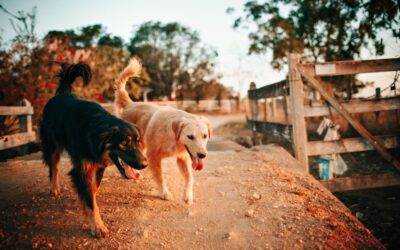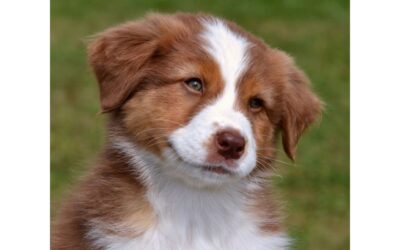Dogs eat crayons primarily out of curiosity or boredom. The colorful nature of crayons may entice your canine friend, mistaking them for toys or treats.
Dogs are inquisitive creatures by nature and sometimes their curiosity leads them to chew on unusual items, including crayons. This behavior can be a result of either boredom or the mere attraction to the object’s texture and color. Pet owners should understand that although crayons are not typically toxic, consuming them can lead to digestive issues for their furry companions.
Ensuring that dogs have adequate toys and attention can help prevent them from turning to inappropriate items for entertainment. As responsible pet owners, always keep art supplies out of reach and provide plenty of chew-friendly alternatives to satisfy your dog’s natural chewing instincts. Addressing this behavior is important for your pet’s safety and health.
Canine Curiosity Or Cause For Concern?
Dogs often explore the world with their mouths. Your pup may find crayons and think they are colorful treats. This is a part of their innocent play. But, chewing on crayons can sometimes be a sign of Pica syndrome. This condition makes them eat items that are not food.
Eating crayons might not be safe for dogs. It is important to assess the risk. Crayons can be made of different materials. Some may be non-toxic for children but not for dogs. Smaller pieces could cause choking. Larger pieces can block your dog’s digestive tract. Always check the crayon’s label. Look for the word “non-toxic“.
Do keep an eye on your furry friend. Make sure they don’t make a habit of crayon-eating. If they do, talk to a vet.
Hidden Meanings In Munching Crayons
Dogs may eat crayons for different reasons. A common cause is a lack of nutrients in their diet. When dogs don’t get enough vitamins and minerals, they sometimes eat strange things. Crayons might seem tasty to them if they’re missing key ingredients in their food.
Another reason could be psychological. Dogs get bored or anxious sometimes. Chewing on crayons can help them feel better. It’s like when a kid sucks their thumb. Both actions are a way to cope with feelings. Making sure your dog has plenty of safe and suitable toys can prevent crayon-eating.
The Make-up Of Crayons: Friend Or Foe?
Dogs sometimes eat crayons, sparking worry in pet owners. Crayons are usually non-toxic, but not all brands are the same. Most crayons contain wax, color pigments, and fillers; safe for kids, but not ideal for pets. Pet owners should check the crayon box for labels like “non-toxic” or “safe for children”.
| Brand | Ingredients | Toxicity |
|---|---|---|
| Brand A | Wax, Pigments, Calcium Carbonate | Low |
| Brand B | Wax, Pigments, Asbestos | High |
| Brand C | Wax, Pigments, Fillers | Low |
Dog owners must take care. Even low-toxic crayons can cause stomach upset. Look out for signs such as vomiting or diarrhea and consult a vet if your dog eats crayons.
Prevention Tactics For Your Crayon-eating Pup
Keeping crayons out of reach from pets is crucial. Use high shelves or locked cabinets to store them. Secure all crafting supplies in containers that dogs can’t open. Make sure to always tidy up after arts activities.
Consider dog-proofing latches for lower cabinets. Don’t forget to check for stray crayons that may have fallen on the floor. Regular checks under furniture can prevent your pup from finding any forgotten art supplies. Be vigilant in keeping craft areas clean and inaccessible to your four-legged friend.
When To Seek Veterinary Intervention
Dog owners should watch for signs of trouble. Symptoms like vomiting or lack of appetite signal digestive distress. Lethargy and abdominal pain are also red flags. If these occur, a vet visit is a must.
Dogs might eat unusual items, including crayons out of curiosity. This can lead to intestinal blockages. Such blockages require urgent medical attention. Your vet will assess the situation and recommend action.
A vet’s insight is crucial for understanding why dogs eat non-food items. Sometimes, this behavior is due to nutritional deficiencies or psychological issues. A vet can help with diets or behavior training to prevent future incidents.
Frequently Asked Questions On Why Does My Dog Eat Crayons
Why Do Dogs Chew On Crayons?
Dogs often chew on crayons out of curiosity or boredom. They are attracted to the odor, texture, and sometimes the taste of the wax. The colorful appearance can also be appealing to a dog’s sense of sight, making crayons a tempting object to explore with their mouths.
Are Crayons Toxic To Dogs?
Most crayons are made from non-toxic materials. However, eating large quantities can lead to digestive issues like blockages or stomach upset. It is always best to consult a vet if your dog ingests a large amount of crayons or if you notice any signs of distress.
What To Do If My Dog Eats A Crayon?
If your dog eats a crayon, monitor them for any signs of digestive discomfort. Small amounts often pass through without issue. Remove remaining crayons to prevent further ingestion and consult your veterinarian if you notice any changes in your dog’s behavior or bowel movements.
Can Crayons Cause Blockage In Dogs?
Crayons can cause intestinal blockages, especially in small dogs. Symptoms of a blockage include vomiting, diarrhea, lack of appetite, and lethargy. If you suspect your dog has a blockage, it’s important to seek veterinary care immediately.
Conclusion
Understanding your dog’s quirky habit of eating crayons is essential. Prioritize their health by monitoring for signs of distress. Consult a vet if this behavior persists or escalates. Embrace safe alternatives to keep their chewing urge satisfied. Always put your furry friend’s well-being first.




